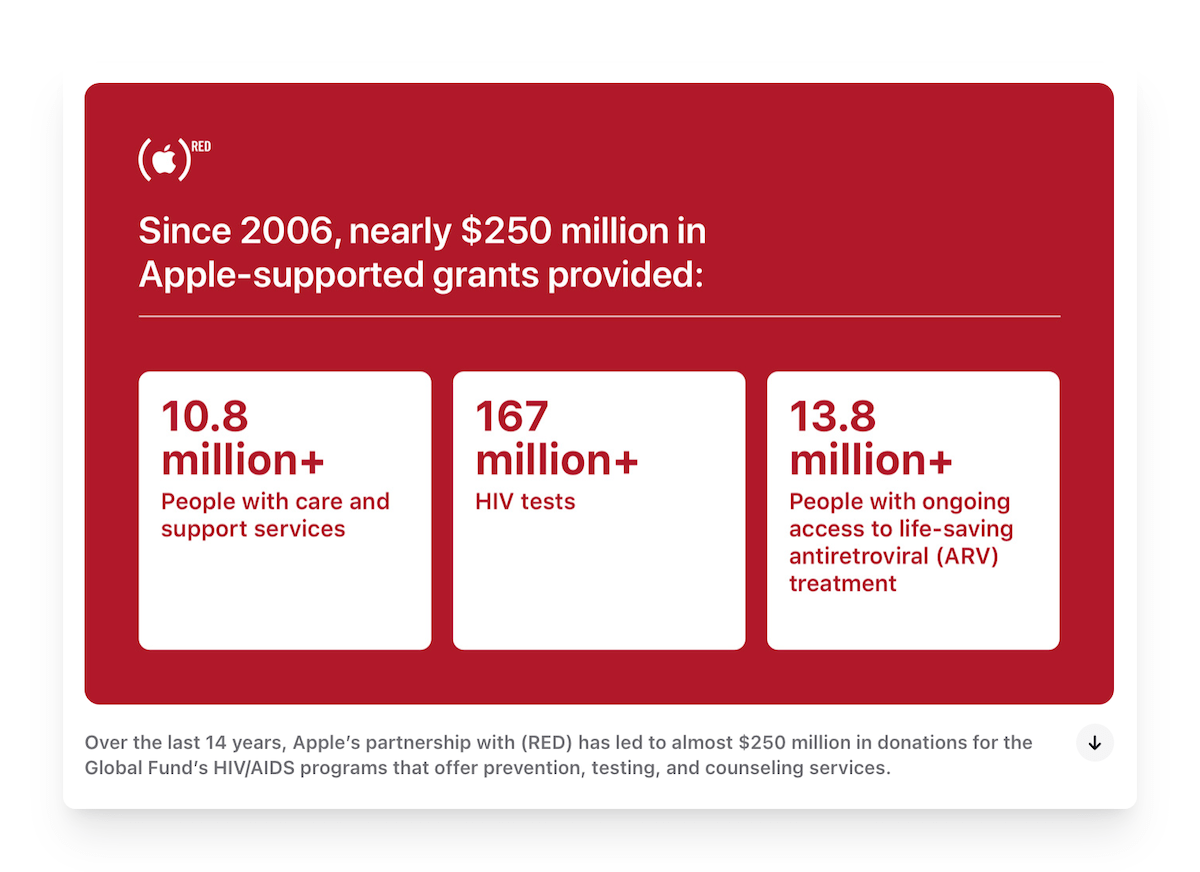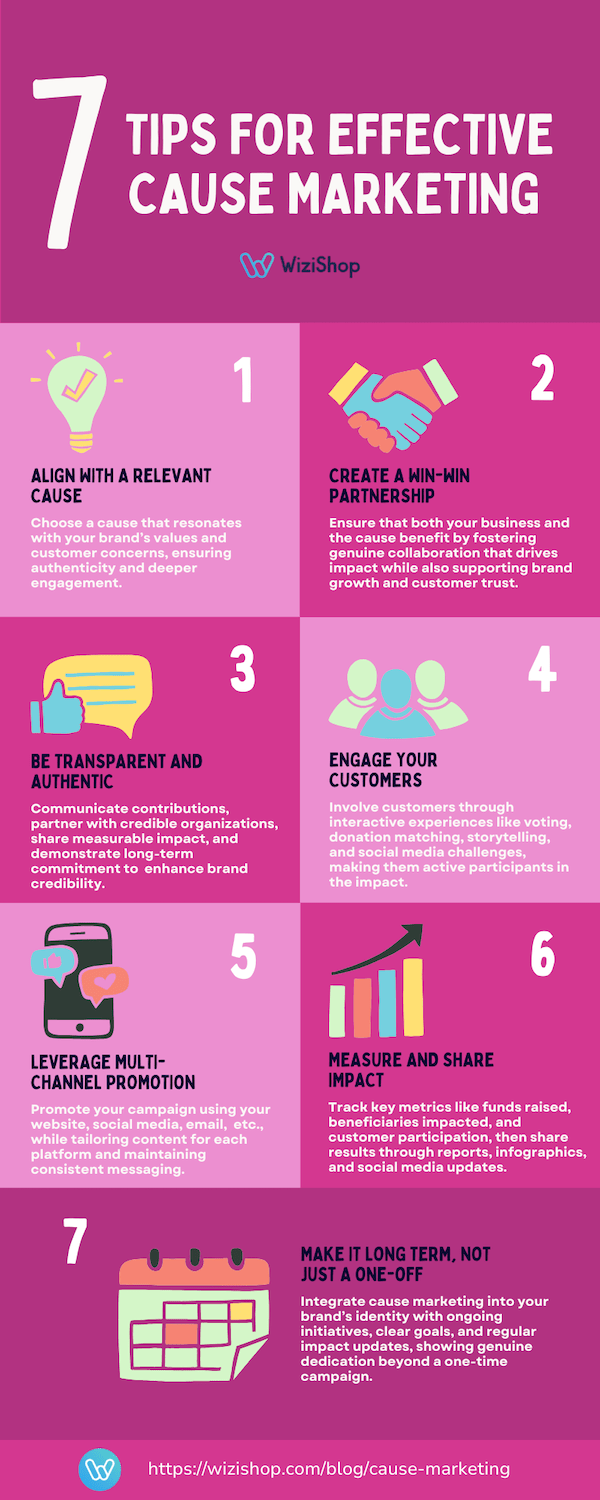In today’s socially conscious world, consumers expect brands to do more than just sell products—they want to support businesses that stand for something meaningful.
In fact, in a global 2023 survey of consumers of different generations by Statista, the majority of respondents in each generation had a preference for brands that reflected their values. The generation with the greatest percentage of respondents stating that they preferred buying from brands that shared their values was the millennial group at 64%.
This is where cause marketing comes in. By aligning with social or environmental causes, companies can build deeper connections with their audience while making a positive impact.
Whether involving sustainability initiatives or charitable partnerships, fundraising campaigns or donation-linked products, cause marketing not only strengthens brand reputation but also drives customer loyalty and engagement.
In this post, we’ll explore the benefits of cause marketing, real-world examples, and tips to help your business create meaningful campaigns that resonate with your audience!
What is cause marketing?
Cause marketing is when a for-profit company creates promotional campaigns that aim to not just increase profits for the company but also improve society. It’s a win-win!
As a key part of a company’s overall corporate social responsibility strategy, effective cause marketing assists in boosting brand awareness and engagement with the public. In addition to supporting social causes, cause marketing will frequently involve sustainability initiatives.
What is the difference between cause marketing and cause-related marketing?
Although often used interchangeably, cause marketing and cause-related marketing are not the same thing.
Cause marketing is a broad term that refers to a company’s efforts to support a social or environmental cause as part of its overall marketing strategy. It doesn’t necessarily entail a partnership with a nonprofit organization or involve sales, e.g., a company reduces its carbon footprint by using sustainable packaging and promotes this as part of its brand identity.
Cause-related marketing, on the other hand, is a specific type of cause marketing where a business directly ties product sales to a charitable cause. An example of cause-related marketing is if a brand were to pledge to donate $1 to a cancer research foundation for every product sold during a campaign.
To summarize, cause marketing is about integrating a cause into a brand’s identity, while cause-related marketing specifically connects sales with charitable contributions.
What are different types of cause marketing campaigns?
Cause marketing campaigns come in many forms, depending on a business’s goals and the cause it supports. Here are several common types:
- Purchase-triggered donations: A company donates a product or a portion of sales to a cause when customers buy a product.
- Point-of-sale donations: Customers are invited to round up their purchases or donate at checkout.
- Co-branded partnerships: A business collaborates with a nonprofit organization to create a special product, event, or campaign.
- Employee volunteerism and giving: Companies encourage employees to volunteer or donate, sometimes matching contributions.
- Awareness and advocacy: Brands use their platform to educate and spread awareness about a cause.
- Sustainable and ethical business practices: A company commits to environmentally friendly production, fair trade sourcing, or reducing its carbon footprint.
- User-engagement challenges: Brands encourage customers to participate in a movement or social challenge.
Each approach helps businesses connect with customers while supporting a meaningful cause.
Benefits: Why is cause marketing important for your business?
Cause marketing is a strategic lever that allows you to give back to the community, but it can also help your business in numerous ways. Check out some of the benefits that launching cause marketing campaigns can bring you!
Good public relations
Whether you donate a percentage of your sales to nonprofits, employ eco-friendly business practices, or create new goods to promote charities, cause marketing will aid in boosting your image in the eyes of your target audience when building your ecommerce brand. It shows your commitment to social responsibility and demonstrates that your values go beyond your bottom line.
This positive PR can help increase awareness of your brand, potentially bringing in new customers and investors. What’s more, if you plan on hiring a team, a stellar brand image can attract more employees who like the idea of working for a company with a great reputation.
Increased customer loyalty and engagement
Partnering with charitable organizations and availing of other forms of cause marketing can also evoke positive feelings in your customer base.
After all, as the saying goes, “Actions speak louder than words!” With well-executed cause marketing campaigns, your customers will see that you’re serious about the values you may have previously written about, such as on your website’s About Us page, which can lead to them having more trust in your business.
If people see you as a trustworthy organization, they’re more apt to continue purchasing your products or services, becoming loyal shoppers who may even turn into brand ambassadors and encourage others to buy from your store. The increased desire to interact with your brand can also extend to social media, leading to a higher engagement with your followers.
Competitive advantage
Today’s consumers have many different options to choose from when it comes to ecommerce sites. Regardless of if you sell handcrafted astrologically themed candles, sneakers made from vegan leather, boxing coaching sessions, or any other goods or services, standing out from the competition will be essential to your long-term success.
When you align yourself with a special cause that’s also close to your target audience’s hearts, you can better differentiate your business from a sea of competitors and push shoppers to choose you when they’re ready to make a purchase. Just be sure to be genuine with your efforts, as the slightest whiff of inauthenticity can have people heading for the hills!
Examples of successful cause marketing campaigns
(RED) and Apple teaming up to fight AIDS
Apple’s partnership with (RED) is a strong example of blending corporate success with philanthropy. Since 2006, Apple has released special (PRODUCT)RED devices and accessories, donating a portion of sales to the Global Fund to fight HIV/AIDS and later COVID-19. This initiative aligns with Apple’s brand values while encouraging consumers to contribute to a cause.

Source: Apple
Warby Parker’s “Buy a Pair, Give a Pair” program
In collaboration with several partners around the world, Warby Parker works to make sure that a pair of glasses is distributed to somebody in need for each pair of Warby Parker glasses that is purchased. Since the initiative began, the company has been able to assist people in over 75 countries, with more than 15 million pairs of sunglasses having been distributed.
Source: Warby Parker
Patagonia donating 1% of sales to environmental causes
Patagonia has pledged to donate 1% of all sales to the preservation and restoration of the natural environment since 1985, gifting more than $140 million in cash and in-kind donations to both domestic and international environmental groups. In addition, 1% for the Planet, a non-profit corporation created in 2002 by the founder of Patagonia and the owner of Blue Ribbon Flies, serves to encourage other businesses to give back to their communities and protect nature.
Source: 1% for the Planet
7 Tips for effective cause marketing

1. Align with a relevant cause
Because there are so many different worthwhile causes to back these days, it can feel overwhelming when determining which to align your business with when working on cause marketing campaigns.
For your best chance of success, however, note that you will want to choose causes that align with your brand values, mission, and customer interests. By selecting a cause that genuinely matters to stakeholders, you can avoid superficial partnerships and ensure authenticity.
Say that you sell cruelty-free makeup made from organic ingredients. The people in your target audience likely care about animal welfare and environmental issues, so you might opt to partner with an animal shelter, donate to efforts to eradicate animal testing, or develop sustainable product packaging, for example.
💡 Don’t forget to research the impact and credibility of potential nonprofit partners to ensure meaningful contributions. An organization might look amazing on paper, but you might find that their actions don’t match up with their words!
2. Create a win-win partnership
Not all cause marketing campaigns will involve collaborations, but when they do, they'll need to benefit all parties involved in order to be truly successful. A well-crafted partnership boosts brand loyalty, drives sales, and makes a real impact.
Aim to collaborate with nonprofits or social organizations that can benefit from your brand’s support, looking for mutually beneficial outcomes that boost both your business and the cause.
A one-sided cause-marketing partnership can backfire, damaging a brand’s reputation and trust. If your company appears exploitative—profiting without real impact—consumers may see it as insincere. Misaligned or poorly executed campaigns risk backlash, reducing credibility and engagement.
3. Be transparent and authentic
If you only take one bit of advice from this article, I urge you to prioritize transparency and authenticity for any cause marketing campaign you launch! Not being transparent and authentic can lead to consumer distrust, accusations of “causewashing,” and reputational damage, ultimately harming brand loyalty and sales.
Here are a few actions you can take to demonstrate to your audience that you’re the real deal:
- Clearly communicate contributions: Specify how much money, percentage of sales, or resources are donated, avoiding vague claims like “a portion of proceeds.”
- Partner with reputable organizations: Work with well-known, credible nonprofits and showcase their impact through reports, testimonials, or case studies.
- Involve customers in the mission: Allow consumers to track their impact, vote on initiatives, or see real-time progress.
- Provide proof of impact: Share updates, stories, and measurable results on how the donations or efforts are making a difference.
- Ensure long-term commitment – Avoid one-time campaigns; integrate the cause into business practices for lasting impact and credibility.
4. Engage your customers
Engaging customers in cause marketing turns them from passive buyers into passionate advocates. When people feel involved, they’re more likely to support, share, and stay loyal to your brand.
To do this, offer interactive experiences—let them vote on initiatives, match their donations, or track real-time impact. Just like with examples of branded content, you can also use storytelling to make the cause relatable and personal.
Source: LEGO
Social media challenges, user-generated content, and exclusive cause-related products can also drive engagement. The more your customers feel like they’re making a difference, the stronger their connection to your brand, creating a win-win for both your business and the causes you support!
5. Leverage multi-channel promotion
After taking the time to create a thoughtfully crafted cause marketing campaign, you might think that telling people about it with a well-placed banner on your website is going to be enough to do the trick...
While you should definitely spread the word on your website, whether via a notification bar, landing page, or other means, leveraging multi-channel promotion in cause marketing ensures that your message reaches the right audience wherever they are. Use digital marketing, social media, email, in-store promotions, and PR for as much visibility as possible.
To maximize impact, aim to tailor content for each channel, e.g., by using compelling visuals on Instagram, in-depth storytelling in blogs, and behind-the-scenes videos on YouTube. In addition, you might consider collaborating with influencers or partners to amplify reach. Just be sure that your messaging is consistent across all platforms.
6. Measure and share impact
Measuring and sharing impact in cause marketing proves your efforts are more than just good PR—it builds trust, credibility, and long-term engagement. Consumers want to know their support makes a real difference, so don’t just say you’re helping—show it!
Depending on the type of campaign, you might take a look at any of the following key metrics to determine its effectiveness:
- Funds raised: Track the total amount of money donated to the cause through the campaign.
- Products or services donated: Measure the number of goods or services provided to those in need.
- Beneficiaries impacted: Count the number of people, communities, or organizations positively affected.
- Customer engagement: Analyze social media shares, campaign-related purchases, or participation in cause-related events.
- Brand perception and loyalty: Use surveys, sentiment analysis, or repeat purchase rates to gauge consumer trust and long-term impact.
You can then use reports, infographics, testimonials, and social media updates to share results with your audience transparently. When people see tangible results, they feel more connected to the cause and your brand, turning them into loyal advocates who keep the movement growing!
Source: Chewy
7. Make it long term, not just a one-off
Last but not least, although supporting a cause through a single campaign is nice, making cause marketing a long-term commitment is even better. This is because it builds credibility, deepens impact, and strengthens customer loyalty.
A one-off campaign may grab attention, but consistency shows genuine dedication to the cause, preventing skepticism. Long-term efforts create lasting change and allow brands to integrate purpose into their identity, not just their promotions.
To sustain momentum, set clear goals, provide regular impact updates, and evolve initiatives based on real needs. Customers and employees appreciate ongoing commitment over temporary feel-good promotions and are more likely to engage with your business when they see continuing efforts.










